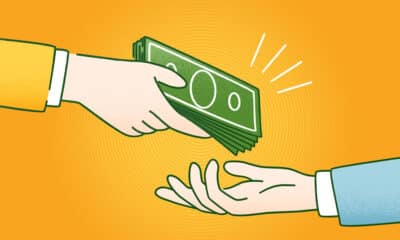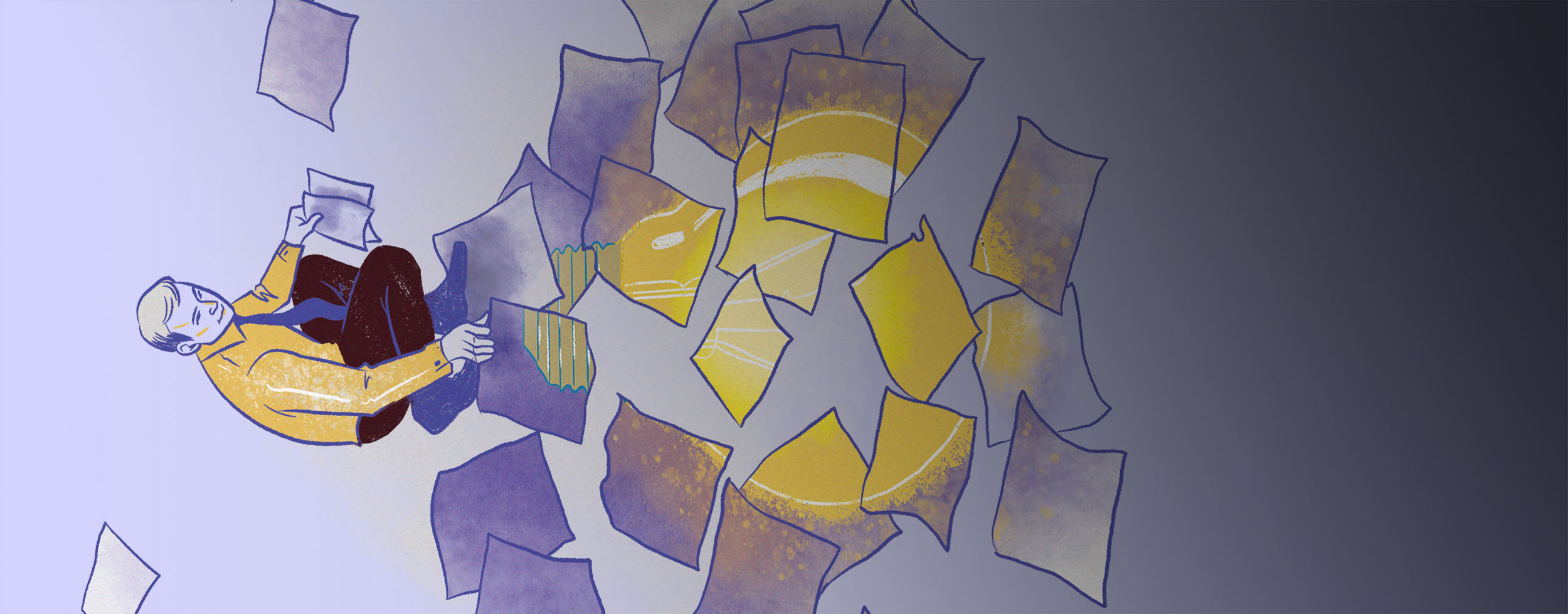
The SCAMPER Method Can Help Screen Printers Generate New Ideas
If you’re stuck in a rut, try this powerful tool from Michael Michalko’s acclaimed book "Thinkertoys."
Published
3 years agoon
WHERE DO IDEAS originate? Some people always seem able to instantly unlock one interesting idea after another, while others get stuck driving the struggle bus and aren’t as prolific. When I was an art director, I had to constantly come up with new ideas dozens of times a day. After a while, that well can run dry.
Then, I discovered that if I used a constraint, ideas would flow better, and I could work up new designs at a higher tempo and with better client acceptance. I used to keep a stack of index cards on my desk with different words written on them with a fat marker. Bold. Clear. Outline. Rough. Pattern.
It was about two inches thick, and it was my go-to for inspiration when starting a new project. If I needed a little push, I’d simply pull off the rubber band on the stack and deal myself a few index cards, then start doodling some thumbnail sketches. In a matter of moments, I had a fresh take on something and could crank out a great design from there.
Thinkertoys
Later, I discovered Michael Michalko’s legendary book, Thinkertoys. One of the chapters in this fascinating work outlines the use of a method called SCAMPER. At the recent Shirt Lab Ft. Worth event, I gave a talk based on this novel idea.
The tool is simple to use, and very powerful. Like my index card trick, the idea behind SCAMPER uses a constraint word or phrase to help jumpstart the idea generation process.
SCAMPER stands for:
- Substitute
- Combine
- Adapt
- Modify or Magnify
- Put to Another Use
- Eliminate
- Rearrange or Reverse
I bet you’re already thinking of ways you can use these powerful constraint words. For me, they’re like throwing gasoline on a fire. Instant results!
Let’s take a look at SCAMPER and see how this method can work for you.
Substitute
Right now, think about a project or design you’re working on or are struggling with. What if you switched something out? One thing for another. Would there be a unique and interesting result? Try it. Here are some ideas for you to begin with the word Substitute:
- Can you change the ink, thread, or decoration technique?
- What if you used a different garment?
- How could you substitute people involved in the process?
- What if you changed how something was sold? Can you substitute your method?
- What if you changed something in the process? Would the result be different?
- Could you change the rules of how you operate?
- What if you changed the name or headline?
- Would you get a different result with a new photo or video?
- What if you didn’t sell decorated apparel? What could you also market?
Substituting one thing for another can lead to powerful changes. But, like a lot of things, they don’t always work. If you do substitute something and don’t have favorable results, what did you learn? Sometimes that’s more valuable than having success.
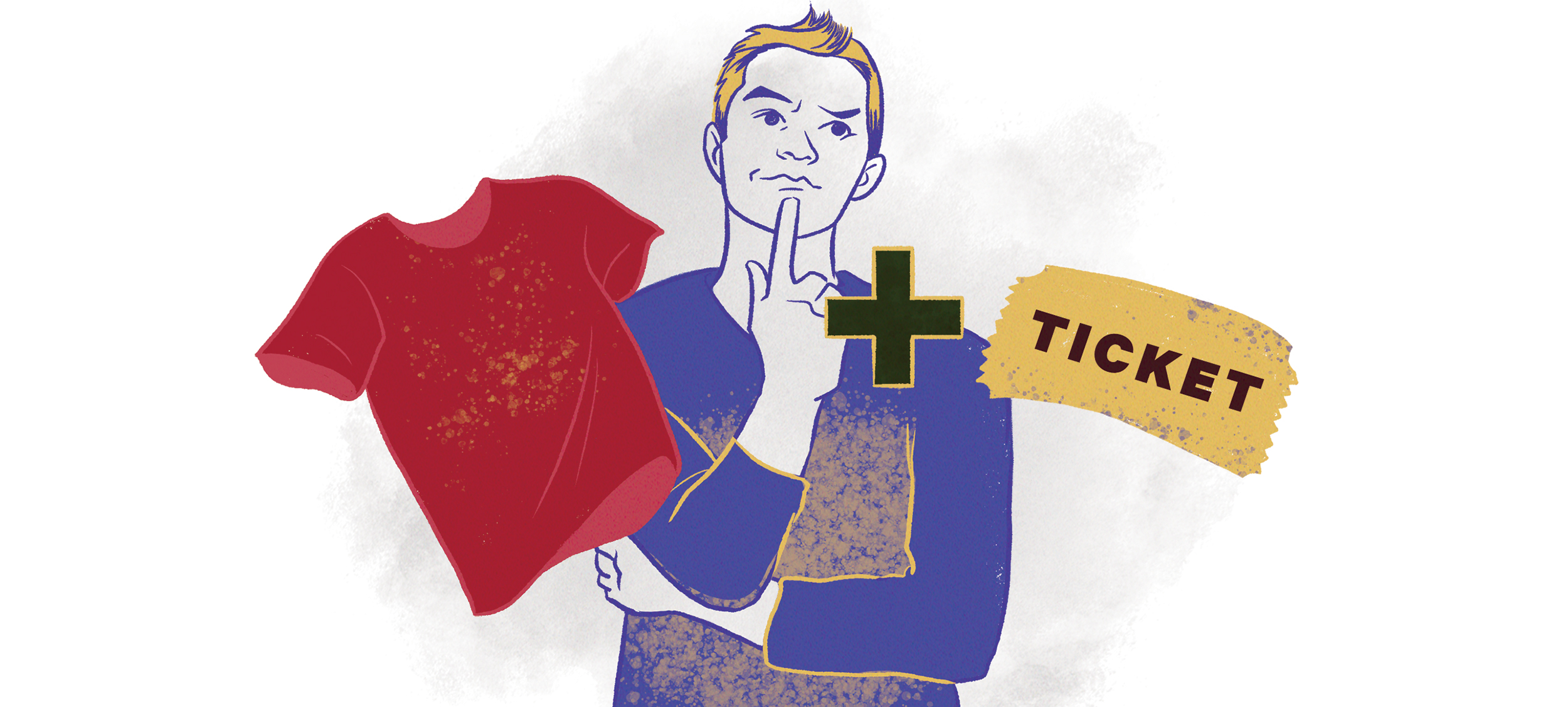
Combine
Welcome to the magic world of addition. When you take one thing and add it to another, often you get a fun result. This is why unique and unrelated brands often collaborate to form a new product or service.
For retailers, another way of using the notion of combining is with a bundle. This is why you see multiple items for sale, but grouped together. Sold separately, they are higher priced. But sold together at a lesser price, they create value.
- What can you combine to make a different result?
- What can you combine to lower the cost of production? For example, what if the shirt poly-bags had size stickers on them? Then, you wouldn’t have to add them later.
- What decoration methods could you combine to produce something unique? Could you print a pattern on fabric and then use that as applique on a sweatshirt?
- Could you combine different products on an online store to maximize value for the consumer?
- In your shop, could you combine departments into one area? What if the shipping and receiving teams were the same staff?
- What could you combine from a design standpoint to generate a new art idea?
- Could you combine two client projects? What if you masterminded the behind-the-scenes for a fundraiser store with two or more of your clients involved?
The fun part of this step is taking two or more ideas, methods, ingredients, customers, products, or techniques and seeing what might happen if they were mixed in together. After all, how do you think the peanut butter got into the chocolate cup?
Adapt
This one is all about observation. Can you take something that already exists and repurpose it for something else? What might make sense? Somewhere, sometime there was the first person to dip pancake batter around a hot dog with a stick or turn a favorite book into a movie. If they can do it with those ideas, what could you do in your shop?
For example:
- Could you use food packaging, like rebranded mason jars, pizza boxes, or fast food sandwich containers, to make a shirt offer unique to your customers?
- What if the apparel the customer wears allowed them access to an event? What if the shirt is the ticket?
- Could you use the ink, thread, or other consumables in the process in a different way?
- What part of the process could you change to get a different result?
- Are there ideas from different industries, venues, methods, or technologies that could improve something?
- What does your data or history in the industry show? Can you use something from days past to evolve the outcome?
Adapting is all about changing something to produce a new result. This means experimenting. Don’t get too caught up in the notion that it “won’t work” or it’s a dumb idea. Try new adaptation ideas on for size and discover new ideas. Sometimes a questionable result is the steppingstone to a new idea. Remember, you would have never thought of that new idea without that first attempt.
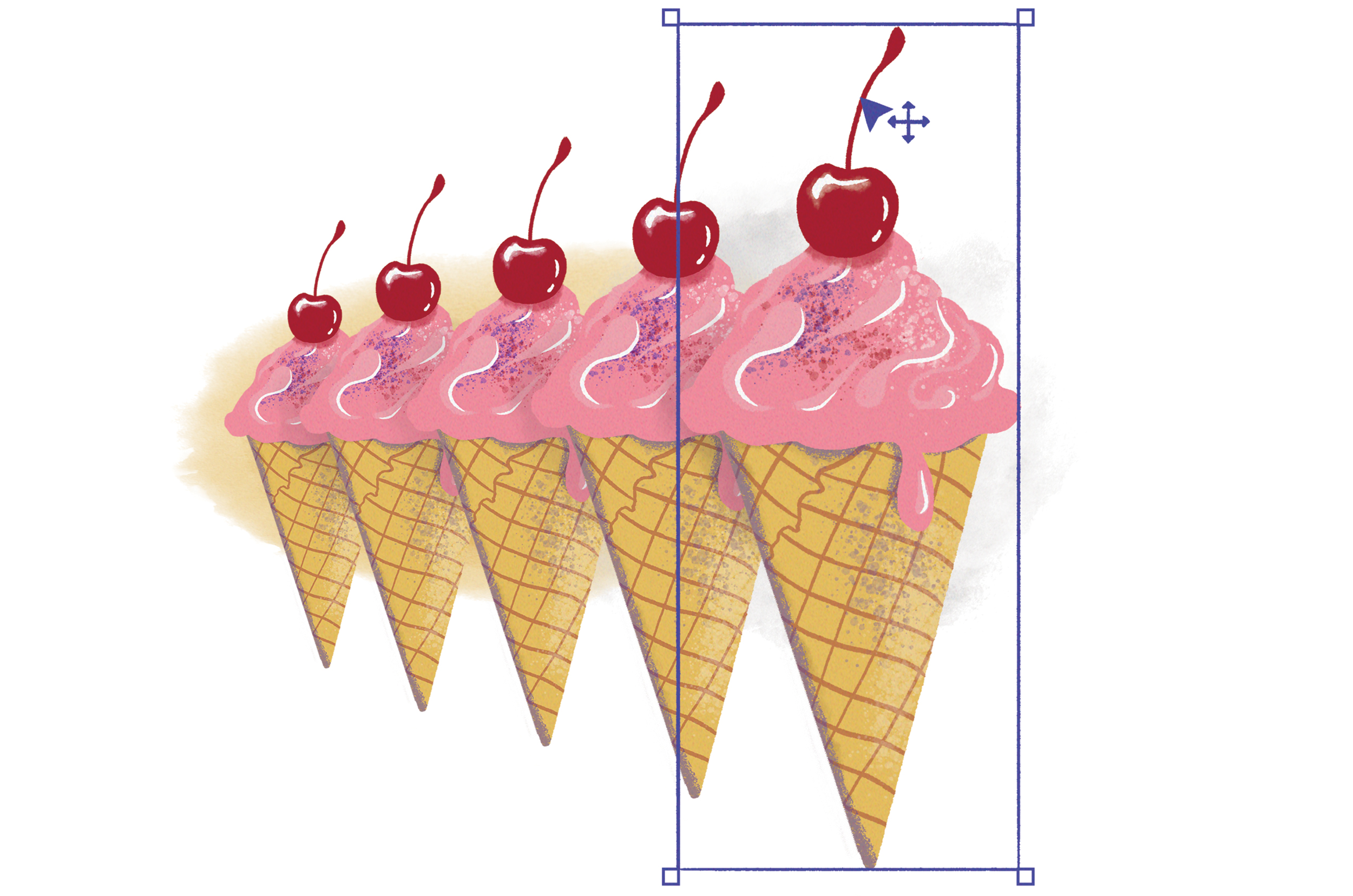
Modify Or Magnify
When you think about your existing ideas, how often do you consider changing the size, shape, color, texture, weight, or other physical features of something? Just making things bigger often has an enormous impact on the outcome.
- What if the buttons on your webpage were 30 percent larger? Would more people click?
- How could you increase the size of your mailing list? Would that make an impact on your drip marketing campaigns?
- Could you take something very small, such as an insect or an ice cream cone, and make it enormous on a T-shirt?
- What if the embroidery or ink was thicker? That’s what puff and high density is all about. How could you use that with your client’s logo or design?
- What if the packaging weighed more? If you shipped the garment in a nicer box, instead of a bag, would that increase the perceived value of your apparel line? This is why an iPhone box is so heavy.
- What if you made the halftone dots huge? That’s a technique that Roy Lichtenstein employed in the art world to great success.
- Can you increase the speed or frequency of how something works?
Consider changing the properties of something to produce a new result. This means playing around with the idea of what is considered “right.” Challenge some notions.
Put to Another Use
Are there new ways to use your product or service that you haven’t considered before? Put to Another Use is all about the “how” your idea, product, or service is being used. We all learned this lesson well when the industry switched from producing decorated T-shirts and apparel to protective masks to help with the COVID-19 pandemic. Have you ever stopped to consider that? Most people haven’t. We’re usually stuck in the “this is the way we’ve always done it” mode. Free yourself up from this!
- Think how a child would use what you do or sell. What about a senior citizen? Could you do something new for these markets?
- Is there another target market that is similar to the one that you currently serve, that might be a good fit for what you do? Maybe you serve rock bands and the music industry. Can you do the same thing for touring comedians, magicians, or professional bowlers?
- Are there new ways to use what you do? What else can you embroider, print, or decorate? Pillows, curtains, furniture…?
- Can you reuse something in the process? That bag Gildan uses to wrap the shirts makes a great trash can liner, for example.
- How would people with disabilities use your product or service? Can you build a marketing and sales strategy to help them?
Put to Another Use is all about finding a new way to use your product or service that you have never considered before. To travel down this road, it might be helpful to get feedback from new stakeholders in your community.
What problems can you help solve with what you do best?
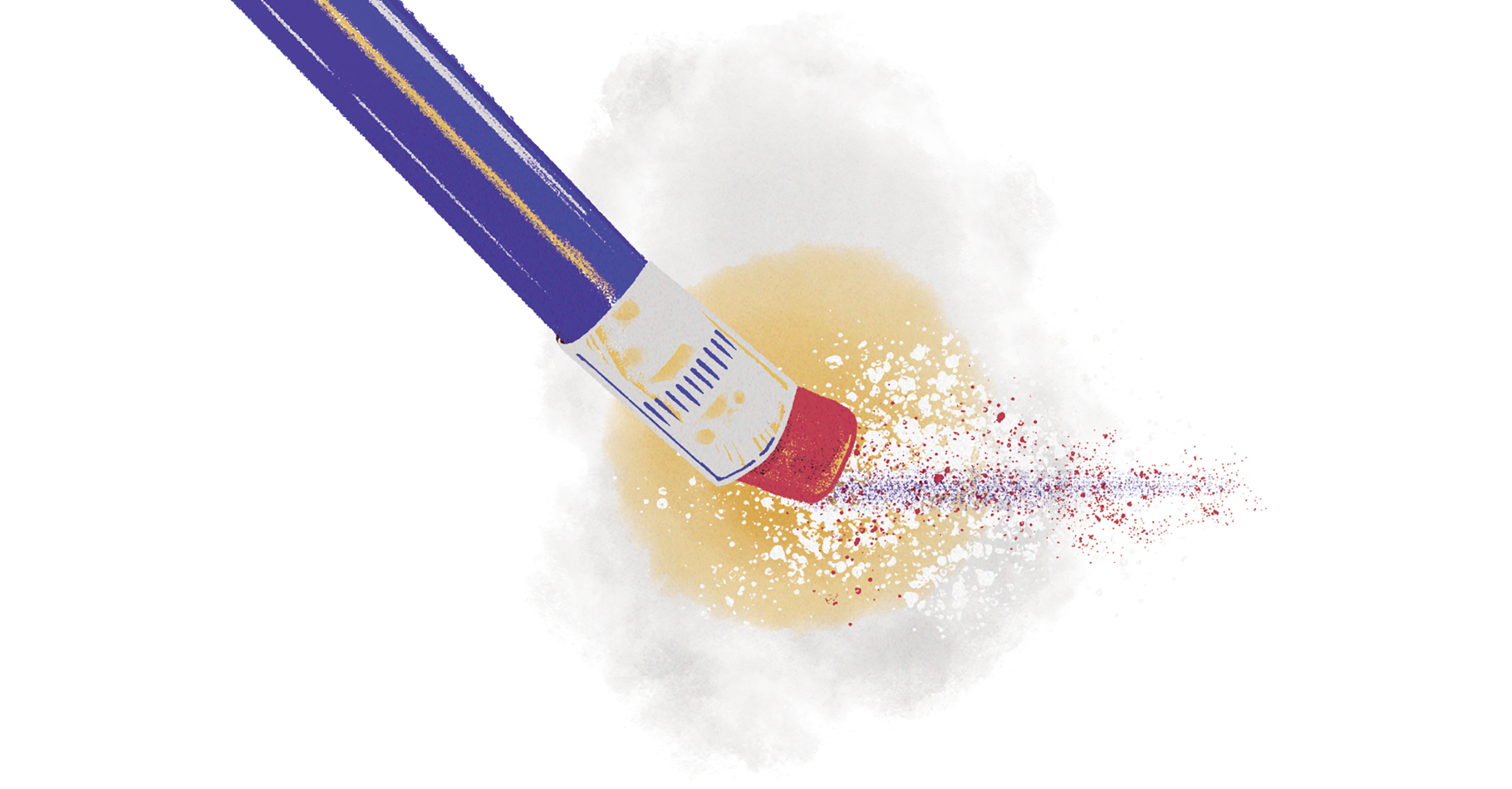
Eliminate
Does your pencil have an eraser? Because with this idea, you’ll need to start thinking about what you can delete. And I mean this in a good way. While it’s true you can always create something new if you add something to the product, process, or service, that works the other way around when you start eliminating things, too.
What would be the result if you started eliminating things?
- Can you reduce the time it takes to do something?
- What could you change about the product to make something new?
- How can you simplify something?
- What if your website didn’t have words?
- How can you reduce the effort involved? For your team? Customer?
- Instead of doing something with four colors, can you do it in two?
- What steps can you eliminate from your process?
- Could you reduce the friction during the sales process?
Sometimes simplifying can be difficult. Try to think things through and get good feedback from your team. It helps if you’re measuring and gathering data, because then you can compare results against benchmarks.
If you wanted to make something easier, what would you change first?
Reverse Or Rearrange
Often businesses thrive on a certain way of doing something. There are established processes and standards that are built and kept. If you want to try to shake things up a bit, try thinking how you might reverse or rearrange the established norms on how things are handled.
Would the results be different? Improved?
- Take payment upfront instead of billing or invoicing after the work is completed.
- What if the squeegees, floodbars, and ink were added to the screen before they were brought to the press? How much faster would setup be then?
- Could you rearrange the production floor to increase efficiency and eliminate wasted motion? What would you change?
- What if you hooped the garments in embroidery before you brought them to the machines?
- Would you get different results if you printed your simulated process seps in a different order on press? What results change?
Think through your processes. What happens if you switch step two with step six? What you are looking for is a different result. Experimenting and testing with the sequence of things can lead to new ideas. Not all of them will work, but trying similar notions with SCAMPER can lead to some new discoveries that have a big impact.
Using the Scamper Constraint
So, now that you know the secret behind the SCAMPER constraint system, are you going to put it to good use? Like a lot of things, it only works when it’s being used. Try one of these ideas on your next project and see if you can arrive at some new ideas. You may just surprise yourself!
Marshall Atkinson is the owner of Atkinson Consulting, LLC, based in Mesa, Arizona. He coaches apparel decoration companies on operational efficiency, continuous improvement, workflow strategy, business planning, employee motivation, management, and sustainability. He is a frequent tradeshow speaker, author, and host of two podcasts, as well as co-founder of the Shirt Lab educational company. He can be reached at marshall@marshallatkinson.com

SPONSORED VIDEO
Let’s Talk About It
Creating a More Diverse and Inclusive Screen Printing Industry
LET’S TALK About It: Part 3 discusses how four screen printers have employed people with disabilities, why you should consider doing the same, the resources that are available, and more. Watch the live webinar, held August 16, moderated by Adrienne Palmer, editor-in-chief, Screen Printing magazine, with panelists Ali Banholzer, Amber Massey, Ryan Moor, and Jed Seifert. The multi-part series is hosted exclusively by ROQ.US and U.N.I.T.E Together. Let’s Talk About It: Part 1 focused on Black, female screen printers and can be watched here; Part 2 focused on the LGBTQ+ community and can be watched here.
You may like
Advertisement

Arcus Printers Barracuda Conveyor Flatbed Cutter

The Profit Impact of a Market Dominating Position

Inkcups Announces New CEO and Leadership Restructure
Advertisement
Subscribe

Bulletins
Get the most important news and business ideas from Screen Printing magazine's news bulletin.
Advertisement
Most Popular
-

 Case Studies2 months ago
Case Studies2 months agoHigh-Density Inks Help Specialty Printing Take Center Stage
-

 Art, Ad, or Alchemy2 months ago
Art, Ad, or Alchemy2 months agoF&I Printing Is Everywhere!
-

 Andy MacDougall2 months ago
Andy MacDougall2 months agoFunctional and Industrial Printing is EVERYWHERE!
-

 Columns3 weeks ago
Columns3 weeks ago8 Marketing Mistakes Not to Make When Promoting Your Screen Printing Services Online
-

 Editor's Note3 weeks ago
Editor's Note3 weeks agoLivin’ the High Life
-

 Marshall Atkinson3 weeks ago
Marshall Atkinson3 weeks agoHow to Create a Winning Culture in Your Screen-Printing Business
-

 Thomas Trimingham2 months ago
Thomas Trimingham2 months ago“Magic” Marketing for Screen Printing Shops
-

 Case Studies3 weeks ago
Case Studies3 weeks agoScreen Printing for Texture and Depth
